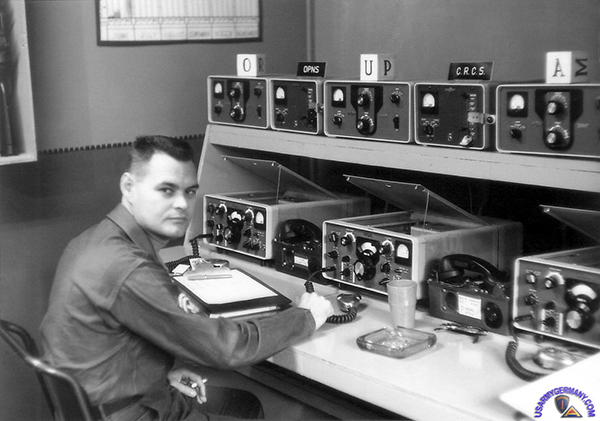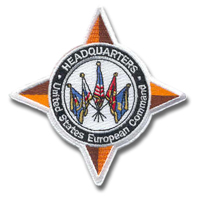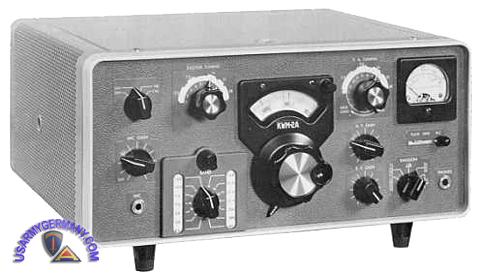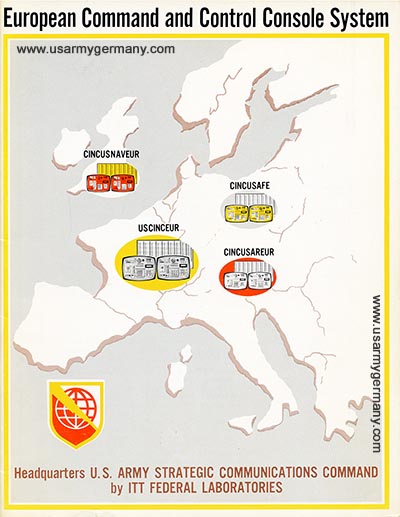| If you do
NOT see the Table of Contents frame to the left of this page, then
Click here to open 'USArmyGermany' frameset |
||||
|
Cemetery Net - ECCCS |
||||
|
|
||||
|
||||
|
|
||||
| Cemetery Net | ||||
|
||||
| CONTROL OF US NUCLEAR WEAPONS IN EUROPE There were a number of "White Papers" submitted to the Joint Chiefs and some of them ended up in Congress relating to control of US Nuclear Weapons in Europe. This also transcended into ownership, release and overall use of the weapons. Enough has been written about that, so I will not go into previously sacrosanct discussions as to why we had these weapons, who (by Country) had control of these weapons, and the ultimate release authority. That said, and at the beginning of time, we (i.e. the USA) deployed Tactical Nuclear Weapons throughout Europe (UK, NL, BE, GE, GR, TU, IT, ES) to the tune of about 4,500 Tactical Nukes. That included the US Army, Air Force as well as Navy Nuclear Weapons. Well, after (about 5 years) that we had deployed these weapons to Europe, the Soviets decided to deploy similar weapons to Cuba! Then, President John F. Kennedy decided to perform a blockade and escalate the situation saying these Soviet Tactical Nukes were too close to the USA. The Soviets came back (in quiet channels) with the same argument, as in, the US Tactical Nukes were deployed next door to the Soviets (East Germany, Yugoslavia, Georgia etc.) so what were they to do? In order to prevent a war (and there would have been most assuredly by the demeanor of President Kennedy and his brother) a VERY smart Soviet General (enough said about that) offered up that the Soviets would agree to remove their nukes (now declassified) from Cuba, if the US would put their Tactical Nuclear Weapons now deployed in Europe under a Communication Command Control system! The Soviets were very nervous about US Tactical Nuclear Weapons in Europe that were for the most part under the control of a Lt.! Well, guess what. The only American Company that had such a Command Control system was ITT. In fact, ITT had developed the Strategic Air Command Nuclear Command Control System. It was a no brainer! The Department of Defense awarded a contract immediately to ITT to develop and deploy a communication system for the Positive Control and Command of US Nuclear Weapons throughout Europe. Skipping a few things, the first communication system for the positive control and custody of our Nuclear weapons in Europe was the Cemetery Net with HF Radio Comms. (This satisfied the Soviets in the short term, as well as Diplomatic circles). (Let me stop here for a moment. The Cemetery Net (CN) was only deployed to assist in the deployment of the PRIMARY Nuclear Command and Control System, the European Tropo-Army (ET-A) [1], a microwave and troposphere scatter system to be deployed throughout Europe with their multiplex data carrying the European Command Control Console System (ECCCS) [2] developed by ITT. Only after the ET-A and ECCCS was deployed and functional, did the HQUSEUCOM J-6 Directorate decide that the CN would be the backup to the ECCCS!) Around 1978, the Roper study came about. It was a TS document (I believe it still is, but will not relate to any of those classified details as I remember.) That document in detail and in conclusion determined that although US Officers were in receipt of Nuclear Weapon release orders through a paper cryptographic decipher code based on the National Security Agency (NSA) distributed code books, it was a better than 84.3% chance that Nuclear Weapon release orders would not be followed by the OIC on the ground!!!!! Consequently and therefore, along came the Enhanced-European Command Control Console System (aka E-ECCCS). This system which I was the Test Director under ITT, employed the KW-7 Crypto device. This provided the on-site commander with unequivocal directions and instructions in writing for deploying the Nuclear Weapon(s) under his command. This was a MAJOR breakthrough for the command and control of US Nuclear Weapons in Europe, but it also opened another area that became very intense with Army Officers in charge of these Tactical nukes, who were not prepared to receive such Direct Order directions with regard to the release and use of US Tactical Nuclear Weapons! USAFE and NAVEUR were quite comfortable with these new orders on "paper". USAREUR was not! Under the noise, USAREUR Tactical Nuclear Commanders were not happy about being given such direct and non negotiable directions. No problem with issuing the orders of the day, but being put under the gun to use or not use nukes, this got to the USAREUR 800lb gorilla level in a hurry! Not one peep out of the AF or Navy, they accepted this new system without exception! [1] ET-A was on the drawing board for sometime. ITT-FEC was working to get the contract awarded at a high level. Well, once it was decided that ITT would put in the ECCCS, the award for the ET-A happened, as a means to get the comms to those remote areas. (For more on ET-A click here.) [2] CN was originally a temporary solution and would be discarded after the implementation of ECCCS. Once ECCCS was activated, the powers that be (USEUCOM J-6) look at CN as a backup. This proved to be a wise decision. In addition, the forward thinking here set the precedent for the next congressionally approved systems to follow. |
||||
|
||||
| The HF Cemetery Net Radio System Soon after the Cuban Missile crisis the Cemetery Net went active (so to speak) circa 1963-64. My point here is that the HF Radio comms were being fielded by US Army EUR and AF EUR as independent means of connectivity before HQUSEUCOM brought it all together and called it the Cemetery Net. What I recollect is that this happened circa 1964. The ECCCS was completed 1967-68. There was a lot of moving equipment and vans to accommodate changes in the network. A caveat here: Initial fielding of US Nuclear weapons throughout Europe required communications connectivity. Land Line comms were virtually non-existent at some of these remote locations, hence the reason for "Radio" comms (or in today's jargon "wireless" comms). This High Frequency communication system known as Cemetery Net (operating in the range of 2-28 Mega Hz) provided connectivity, but not at a great degree of efficiency level, to the Nuclear Weapon storage sites throughout Europe. The US decided to name the system Cemetery Net to accommodate the initial problem (i.e. Command & Control). Later, this system was expanded to serve all of the sites, training the operators with Secret Code books etc. As mentioned earlier, the primary C3 system for TNF command and control was the European Command Control Console (ECCCS), the forerunner being at Offut early 60’s. That was the reason for construction of the European Tropo-Army (ET-A) in Central Europe (and the 486L system in Southern Europe and the Med). In order to build the ET-A, you needed some control communications at the sites for logistical and safety purposes. Hence the HF system. At some point, someone recognized that this system could be used as a means to control Nuclear Weapons at these sites. So then the Cemetery Net was born (CN). ET-A had the basic mission of carrying the signals for controlling the Tributaries (Tribs) at the Nuclear Weapon Control Sites. The system had its initial problems such as assignment of frequencies per country. Some countries would not allow this or that frequency to be used dependent upon their own, private or commercial use. This proved to be a nightmare as the then HQUSEUCOM J-6 had to hire a Frequency Manager. (No small feat I might add. Klaus, may god bless you). At best, it only served as a minor deterrent, as the propagation engineering at that time was not even close to what is available today. Antennas were also a problem in that era, as their engineering criteria and effective coverage often ensured connectivity somewhat less than 90%! All of that said, it did prove to be a deterrent as well as give a "warm and fuzzy" to the higher command that the weapons were under control. (Ok, that said, some officers were not happy with this type of "pseudo" control as they saw too many holes in this type of control system for US Nuclear Weapons. Even though the approved phrase of the day was "ECCCS is coming." Some of these officers were told to keep quiet, while others voiced their opinions at high level. Those officers won out, as they expedited the deployment of ECCCS not only throughout the central region, but Italy (Coltano), Greece (Mount Parnis), and Turkey (Sahin Tepsi) where the Console Remote Equipments (CRE's) of the ECCCS System were deployed. These CRE's road the back of ET-A when it was operational. Primary CN HF Facilities We had three Service CINCS in the European Theater: Army, Air Force and Navy. The were under HQUSEUCOM and ultimately CINCEUR/SACEUR (located at Chievres, Belgium). The first CINCEUR/SACEUR being Dwight Eisenhower. Up until around 1997 (I think), the CINCEUR (US hat)/SACEUR (NATO hat) was always a US ARMY four star, as it was an Army Theater! The command structure Emergency Action Message system rotated among the CINCS. I.e. One day it was USAREUR, the next it was USNAVEUR and the next it was USAFE or visa versa. Finally, the rotation would go to HQUSEUCOM. Everything from the NMCC went to all Service Command Centers as well as HQUSEUCOM (via HF and voice I might add.) Whoever had the “Ball” that day acted at HQUSEUCOM for training purposes. Each Theater Service Commander had an HF site to receive this information. The information was received and relayed to the appropriate service command center via a land line. The big thing here, is that the HF sites copied the EAM's for their respective command center and only relayed to the command center when the land line lost connection. The Boeblingen HF Facility, which was the HQUSEUCOM Command Center Transmission and listening Facility (when the EUCOM Staff was not on the Airborne Command Post (ABNCP) or at Chievres AB Belgium)) was located directly to the left of the Panzer Kaserne Main Gate. As you approached the main gate, there was a dirt road on the left. If you took that road and went 3.8miles, you would come upon the HF site. Actually, a few hundred meters to the right after making this turn, one would pass the Mulheim (German garbage dump). The larger antenna fields had usually 6-8 antennas. Basically, the HF radios at the CRCs, was just double or sometimes triple in number than what was at the other sites. Same Rockwell Collins radio. I think it was the KWM2A (not sure though). |
||||
| The Edingen HF Facility was the USAREUR Cemetery Net Command listening post. It had a land line to the USAREUR Command Center in Heidelberg. (It was wired 24/7. The soldiers at Edingen just maintained the equipment and copied the transmission for backup purposes so that in the event the Land Line went down, they could re-broadcast to the HQUSAREUR Command Center.) That said, it was for the most part ignored by USAREUR Command Center OIC's, until HQUSEUCOM cracked the whip (circa 1965) and made them responsible. This HF site also provided comms for US Army aircraft (Helicopters included). By 1978, they were in step with HQUSAFE and the big brother HQUSEUCOM, in providing classified transport of NSA codebooks throughout the region. They were the HQ USAREUR Command Center Emergency Action Message Command Center! Bann-B (near Kindsbach) was the HF Facility for HQ USAFE. The ECCCS Network and Successive Networks The Cemetery Net was used extensively for comms supporting the deployment and fielding of the ECCCS. (As a side note, and even though the US was ahead in this type of Command and Control at this period in our lives, "Terrorism" as we know it today was not thought about! The concern at higher levels was that someone would "Steal" one of our weapons and use it for ransom purposes undefined!) That was the dogma that some (officers with great vision) had to endure. Ok, time out here --- Read the following with regard to the tune of "Along came Jones" .... as in "along came Nam"!. Everything in Europe went on the back burner. If it was not money being spent in the other theater, then it was not worth it! So, it was not until around 1976 that the new thoughts on the street were terrorism and that the comms supporting Positive Control and Custody of these was inadequate. So, two things were set in motion. First, encrypt the ECCCS circuits as proposed by ITT-DCD and extend tributary lines to those locations where the ET-A did not appear with local PTT lines. This project was known as the Enhanced-ECCCS, of which I was the Test Director. This project was completed 5 months ahead of schedule and below budget. Operational 1982. There were efforts at the USEUCOM J-6 and the Joint Staff J-6 to find a final comm solution to the Command & Control of Nuclear Weapons in Europe and the Pacific. Although the general order of thinking was a Satcom system and an HF system, the Chairman of the Joint Chiefs would not present to Congress until a proof of Concept was inacted. Along came the Straight Talk-Net (ST-N). This was a Rockwell Collins UHF Satcom System. It was deployed to 18 sites as a proof of concept. Once this became operational (1981), then the Joints Chiefs declared and Congress approved, that the future systems would be a Satcom System and an HF System. BUT, they need time to get there. So interim the make up would be such: |
||||
| Collins WM-2A Transceiver | ||||
 Don Elmore operating KWM-2 Collins SSB equipment at CEM 35, Sennelager, mid-1960s |
||||
| For detailed photos and some technical data, see EB5AG's KW-2A Page and the Collins Radio Classics website. | ||||
| European Command and Control Console System | ||||
| (Sources: Nuclear Command and Control in NATO, by Shaun R. Gregory, MacMillan Press LT, 1996) | ||||
| Command and Control of US Theater Nuclear Forces in NATO The special weapons warhead custodial units (59th Ord Bde in Pirmasens) were under the US chain of command, reporting to CINCEUR. CINCEUR managed the special weapons with the European Command Control Console System (ECCCS). During peacetime, this command and control system was utilized to pass emergency action messages from HQ USEUCOM to the various 59th Ordnance Brigade detachments that are colocated with NATO nuclear capable forces. ECCCS was a unique voice system that tied the headquarters of USEUCOM, USAREUR, USNAVEUR and USAFE and various selected sites into a unified conference network which could establish theater-wide master conferences by allowing all users to be interconnected. The system was initiated in 19?? and completed in 1972 when Headquarters, SETAF joined the net. The system was controlled from Pirmasens with network switching centers located at Mount Parnis, Greece; Sahin Tepesi, Turkey; and Pruem, (West) Germany and user terminals at all nuclear weapons storage sites (Germany, the Netherlands, Belgium, Italy, Greece and Turkey) in the Central and Southern Regions. In a serious emergency situation where the use of nuclear weapons was contemplated, the SW warheads would have been removed from their peacetime storage sites and deployed to operational sites where they would have been prepared for use. Some sources say that some weapons would have been taken from storage and deployed at alert level LERTCON 2. This is also the point at which forces would "Chop" from national to NATO command. However, US warhead custodial units would remain under US (EUCOM) control. At some point during the alerting process, it is expected that the US warhead custodial units would have switched from the peacetime ECCCS to the HF radio Cemetery Net system. |
||||
| ADDITIONAL INFORMATION There was the European Command Control Console System (ECCCS) but now it is long since closed down. About 1990 I think. The ECCCS was the microwave and troposcatter network that controlled the nukes at allied bases. The Cemetery Net was the primary means of communicating with those sites though. Not all the tributary sites of the ECCCS had Tributary cabinets installed or even radio equipment available but they all had HF equipment to communicate with. When it was finally found out that we did not need all those signal people at the nuclear custodial sites to man the HF and/or trib equipment; leased civilian telephone lines were finally used and trib cabinets were obtained and the sites were connected to the nodes (Stein, Linderhof, Bremerhaven, etc.) by leased circuits.
The ECCCS had Console Local Equipment (CLE) at major headquarters in Europe; London for the Navy, Ramstein for the USAF, Heidelberg for the Army and Stuttgart for the European Command. The CLEs communicated with the Console Remote Equipment Sites (CREs) at the ECCCS Nodes at Stein, Linderhof, Bremerhaven, etc). The CREs communicated with the Tributary Logic Cabinet Consoles (Trib Cabinets) located at the Theatre Nuclear Sites end stations located on Allied Bases all over Europe. CLE -------> CRE --------> Trib
This was accomplished with a dedicated data communications systems that seems pretty primitive now but it actually worked.
Theatre Nuclear Sites could be at Allied Air Bases, Artillery Units, Lance Missile Sites (UK only), or Air Defense Sites with Nike Hercules Missiles. These were sometimes called SW Storage sites by the US troops guarding them. As I recall the Troops all belonged to the same Infantry unit in Gelsenkirchen (I think) and were the only real foot soldiers left in the Army.
Neither ECCCS nor the Cemetery Net tied into the DCS at any point. One transmitter was used at each node (CLE) site for all tributaries using the node. One 1kw FRC-66 (V) was engineered just for it's specific node location. These transmitters with the associated waveguide, splitters, antennas, etc was a unique installation. One transmitter would feed sometimes more than 8 different antennas pointed in many directions. Some of the Tributary sites were line of sight shots and others tropo depending on the distance and obstacles involved. All tributary sites received all sites signals but only "understood" the data meant for itself and ignored the rest. Both Cemetery net and the ECCCS were separate networks. The FRC-66 would use the same antenna tower as the DCS antennas would and share the stations power, etc. Tributary sites did have their own towers of course. The Tributary radios were in a shelter that was usually placed at the base of the antenna tower. The Tributary console was usually located in the custodial site building. The Cemetery site antennas were not dependant on the Tributary site tower. These were usually whip antennas as were the mobile rigs. The mobile rigs were not RATTY rigs there were no teletypes it was always voice. Different radios were used in the mobile rigs (ARC-102s).
When the custodial site force would deploy to their operational area we would have to provide manning for both the fixed station Cemetery net, the tributary radio equipment and the mobile rig all at once with no additional personnel.
|
||||
Related Links: |
||||


